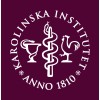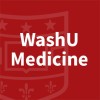
Optimal Time to Initiate Antiretroviral Therapy in HIV & TB Coinfected Adults Being Treated for...
Acquired Immunodeficiency SyndromeTuberculosisAim of the study is to determine optimal time to initiate anti-retroviral therapy in HIV/TB co-infected patients who recently started treatment for Tuberculosis by comparing immediate versus deferred initiation of HAART. The study will address the following questions; Is it possible to reduce mortality rate and increase survival by early initiation of HAART during TB treatment with out compromising for adverse drug reaction, toxicity and immune reconstitution syndrome? What is the risk/ benefit ratio between immediate versus deferred initiation of HAART during TB treatment with respect to safety/efficacy of TB and HIV co-treatment? When is the most appropriate time to start HAART during TB treatment?

Antiretroviral Treatment Strategies in Relation to Adherence, Resistance and Virological Treatment...
Human Immunodeficiency Virus (HIV)This project aims to assess different antiretroviral treatment strategies, optimally controlled and conventional, in relation to drug resistance and virological treatment failure. A Randomised Controlled trial (RCT) where Vietnamese HIV+ patients with CD4+ T-cells <200/ul are randomized into either enhanced treatment support (ETS) through peer supporters or The National AIDS Control Program recommended self supervised treatment (SST). The treatment strategies will be assessed and compared in relation to treatment adherence and drug resistance development with virological treatment failure as primary endpoint. The results from this project will lead to an increased knowledge in relation the impact of treatment support on adherence, virological suppression and resistance development and have an impact on HIV treatment policies in low income settings globally.

Pilot Study of Immediate HIV Treatment in Guangxi, China
HIVAcquired Immunodeficiency SyndromeThe aim of the study is to measure the effectiveness of a pilot program in Guangxi, China to decrease mortality related to HIV. The study's proposed mechanism of decreasing mortality rates is to shorten the time between initial HIV screening and ART implementation to within two weeks. The study population consists of participants who received an initial HIV infection diagnosis within the study period. Medical institutions will provide "one-stop services" by following detailed guidelines regarding reporting of positive HIV antibody screenings, further testing procedures, and treatment referrals in accordance with a pre-determined timetable. In addition, additional strategies focusing on policy development, medical personnel training, and a broad general public education campaign will be implemented. Main assessment measures are HIV-related mortality rates, treatment coverage, or other health outcomes.

Use of Muscle Spectroscopy to Evaluate Mitochondrial Dysfunction in HIV-Infected Patients
HIV InfectionsThe purpose of this study is to see if magnetic resonance spectroscopy (MRS) can be used to detect damage to the mitochondria in HIV-infected patients taking nucleoside reverse transcriptase inhibitor (NRTI) drugs. HIV-infected patients taking NRTI drugs may have an increase in a chemical in their blood called lactate. High lactate levels may damage the energy source of the cell (mitochondria). Damage to mitochondria may cause lactic acidosis, liver failure, and other problems. It is important to find effective ways to see if the mitochondria of HIV-infected patients have been damaged. This study will see if MRS can be used to determine mitochondrial damage.

Pharmacokinetics of Raltegravir During Third Trimester Pregnancy and Post-Partum
HIV InfectionsThis study will evaluate the pharmacokinetic disposition of raltegravir in pregnant HIV-1 infected women. These results will be compared to pharmacokinetic data obtained following pregnancy as well as to studies previously carried out in nonpregnant women and male patients. By determining the disposition characteristics for this specific patient population, antiretroviral (ARV) dosing can be optimized during pregnancy. Appropriate dosing is necessary to minimize adverse effects, slow progression of disease, and further reduce the risk for vertical transmission. Data will also be obtained on genital tract penetration and placenta transfer of raltegravir to the newborn. The subjects enrolled in this study will take an antiretroviral based regimen containing raltegravir twice daily both during and after their pregnancy. The specific regimen will be chosen by their own primary care provider based on their antiretroviral history and resistance testing. They will undergo a series of blood sampling for pharmacokinetic analysis over 12 hours on two occasions; a) during their 3rd trimester and b) approximately 3 months postpartum. Concentrations of raltegravir in the infant will be assessed by cord and infant blood sample at delivery and a blood sample at approximately 3 months of age. Hypothesis: The pharmacokinetic exposure of raltegravir as measured by the 12 hour area under the plasma concentration versus time curve (AUC0-12h) during third trimester pregnancy is similar to the AUC0-12h estimated three months post-partum.

A Study on the Safety and Effectiveness of Rilpivirine Hydrochloride (Edurant) Among Adult Filipino...
Human Immunodeficiency Virus Type 1 (HIV-1) InfectionThe purpose of this study is to assess the safety and effectiveness of rilpivirine hydrochloride in combination with other anti-retroviral (ARV) medications for the treatment of ARV-naive (patients who have not been exposed to ARV) Filipino patients with human immunodeficiency virus type 1 (HIV-1) infection.

A Study to Assess the Safety and Effectiveness of Darunavir for Treating Human Immunodeficiency...
Human Immunodeficiency Virus-Type 1The purpose of this study is to assess the safety and effectiveness of darunavir for the treatment human immunodeficiency virus-type I (HIV-1) infection among Filipino adults.

Suubi4Cancer: Improving Access to Pediatric Cancer Services and Treatment Adherence Among Children...
HIV/AIDSCancerThis study will tailor and explore the short-term preliminary outcomes of an existing evidence-based Economic Empowerment (EE) Intervention, Suubi (Hope in Luganda -local Ugandan language), on access to pediatric cancer diagnosis, care, and treatment adherence among youth living with HIV (YLWHIV) with suspected cancers. The study will specifically address the following aims/research questions: Aim 1. Identify confirmed and suspected cancer cases in a cohort of >3000 HIV+ youth (ages 10-24) seen at 39 clinics in 5 districts heavily affected by HIV/AIDS in southern Uganda. Aim 2. Identify those lost to follow-up from the cohort in Aim 1 and determine reasons for loss to follow-up through qualitative interviews. 2.1. Identify those who have not returned to the clinic in ≥ 60 days (~2 months) from their expected return visit date. 2.2. Determine reasons for loss to follow-up or death. Aim 3. Conduct an open clinical trial to establish the feasibility and acceptability of the Suubi4Cancer intervention. *Due to insufficient sample size, Aim 3 is not implemented.

The Lymphoid Tissue Pharmacology of Antiretroviral Drugs
HIV InfectionHypothesis: Antiretroviral drugs (ARVs) with enhanced LT penetration characteristics in vitro and in macaques will translate into an ARV regimen with increased LN and GALT concentrations and a faster decay and more potent suppression of HIV replication in LT in HIV-infected persons. Objectives: Determine lymph nodes (LN) and gut-associated lymphoid tissue (GALT) pharmacokinetics (PK) in HIV-infected persons on an antiretroviral drug (ARV) regimen. Determine virological responses of antiretroviral therapy in plasma, peripheral blood mononuclear cells (PBMCs) and lymphoid tissue (LT).

Surveillance Cohort Long-term Toxicity Antiretrovirals in HIV-infected Patients Enrolled in TPV...
HIV InfectionsThe SCOLTA project is a system for online surveying of adverse events to recently commercialized antiretroviral drugs and a sentinel for unexpected and late adverse events reactions arising during any antiretroviral treatment.Aim of the proposed study is: to evaluate the prevalence and incidence of serious adverse events and serious unexpected adverse events in HIV-infected patients enrolled in the SCOLTA project Tipranavir cohort and to identify possible risk factors the evaluation of tipranavir containing regimens durability, considering treatment interruption for each reason.
